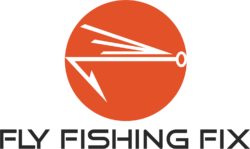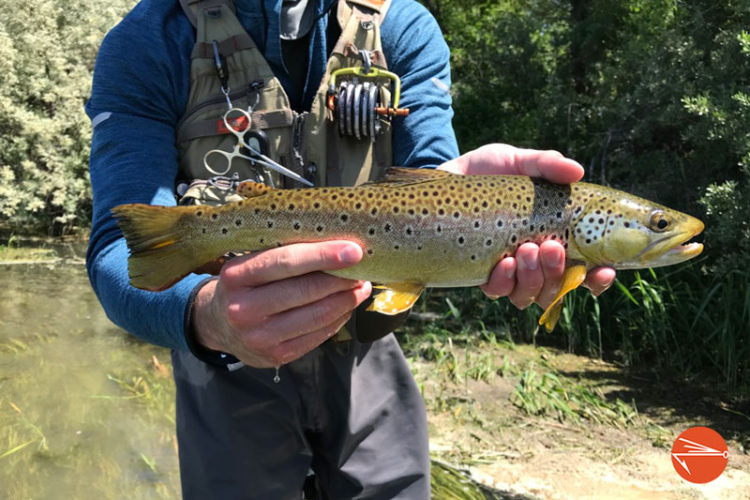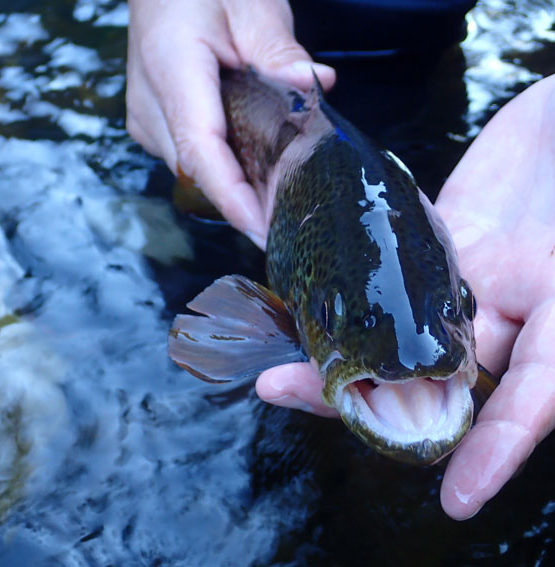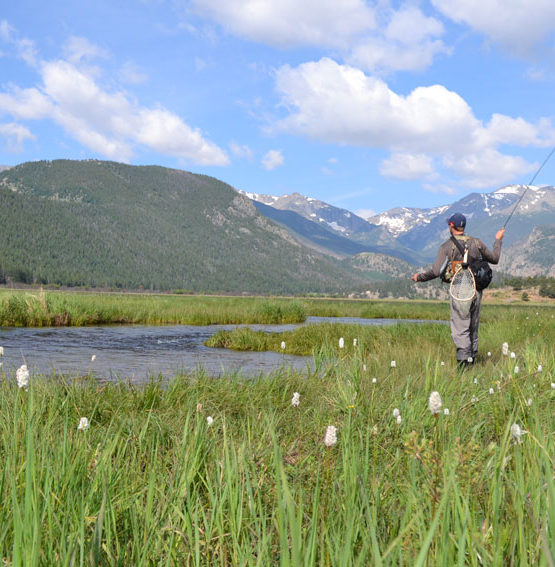As an angler, finding new fly fishing spots can be a challenge. But no matter the difficulty, the reward is usually well worth the effort.
After all, the discovery of a single good fly fishing spot can lead to years of productive and exciting days on the water.
But the question is, how do you find new places to cast your fly rod?
Well, for the rest of this guide, I’m going to cover 10 of the best ways to find new fly fishing spots.
So, if you’re up for a little research and exploration, keep reading!
1. Talk To Local Fly Shops
Honestly, the best way to find fly fishing spots is to talk to local fly shops in your area.
Since they spend just about every day either on the water, or talking to other anglers that have been on the water, this is the best way to discover new (and productive) places to fish.
While they may not give you exact locations, they are usually more than willing to give you general areas where other anglers are having the most success.
That said, on multiple occasions, I’ve had a shop owner pull out a map, direct me to an exact spot on a river, tell me where to stand, and what rig to use.
While this is rare, the more you talk to local fly shops, the more often you’ll stumble into glorious moments like the one I just described.
Oh, and if you buy something while you are there, I am sure they’ll be willing to help out even more!
You Might Also Like:
- 7 Fly Casting Techniques Every Angler Should Learn
- 25 Proven Tips To Catch More Trout
- 10 Best Places To Buy Fly Fishing Gear Online
- 15 Best Flies For Cheesman Canyon
- Is Fly Fishing Hard To Learn?
- What Do Trout Eat? (The Ultimate Guide)
- Fishing The Bighorn River In Montana: The Ultimate Guide
2. Get A Guide
If you really have no idea where to get started and don’t mind spending a little extra money, hiring a guide could be the best option for you.
This will really speed up the process of finding the best possible fishing locations, as well as help you develop your skills as an angler.
Beyond just telling you where to fish, a good guide will show you where to cast, and set you up with the perfect rig.
If you do go this route, make sure to tell the guide that you’re interested in fishing spots off the beaten path.
This will let them take you to some amazing fishing holes that very few people know about.
Just remember that the best fly fishing guides don’t come cheap–and they usually deserve a hefty tip!
But honestly, if you’re dying to discover some of the best fly fishing spots you’ve ever had the pleasure to fish, hiring a guide is the best way to go.
3. Explore State And National Parks
State and national parks can offer some amazing fishing opportunities, accompanied by some of the most beautiful scenery you will ever encounter.
That’s why, if you want to find some new fly fishing spots, we recommend getting out and doing some good old-fashioned exploring.
You should also check out the state and national park websites to learn where you are allowed to fish and familiarize yourself with all of the regulations that go along with each individual park.
It’s also important to do your research here, as the regulations will vary from park to park.
4. Follow Other Anglers On Social Media
While we all use social media in order to share our passion, it can also be a wealth of knowledge to help you find new fly fishing spots.
It can also help you improve your skills, discover new gear, or find some new fishing buddies.
Seriously, when it comes to fly fishing, there are fewer places online that can be as helpful as social media!
For example, searching a specific Instagram hashtag or location can help you find pictures, videos and anglers’ profiles that can direct you to certain areas that have potential.
Another great place to look is Facebook Groups.
By joining a few fly fishing Facebook groups, you will see posts from other anglers and can start to make notes of where they are and even what they might be using to find so much success.
Of course, it never hurts to ask for a little direction on social media either!
More often than not, other anglers are happy to give out good starting points that can lead you in the right direction.
5. Go Fishing With Other Anglers
Not only will fishing with others help you find good fishing spots, but it also makes fly fishing a lot more fun!
Or, if you don’t have any friends that fly fish, try to ask a veteran angler if you can tag along on their next trip. If you do get invited to fish with someone, just remember to follow the proper etiquette.
In other words, when they introduce you to a new spot, keep it to yourself. The last thing you want to do is reveal their favorite fly fishing spot to a bunch of other people that don’t treat it with the kind of reverence and respect it deserves.
If you do, it will probably be the last time they ever invite you out on the water.
And they certainly won’t be willing to reveal any of their other favorite fly fishing spots to you.
6. Look On Forums
Another popular online option is to search through fishing and outdoor forums for hints and tips on where to go.
Online forums are places where anglers can gather online to share their stories, pictures of their catches, and most importantly, information. And the best part is, there are tons of different forums out there that you can comb through.
From general fishing, to fly fishing, and even location-specific forums, you are sure to find some locations through past threads.
And if all else fails, you can just create your own profile and ask some questions yourself.
7. Check Your State’s Fish And Wildlife Website
One overlooked resource that many anglers never think about is their state’s fish and wildlife website.
Most states have plenty of information on fishing areas that you can take advantage of, and will usually include things like stocking schedules, water levels, and even recent reports.
Some websites may even have maps, showing you exactly where the bodies of water reside.
The Department ’s job is to help anglers out, so it only makes sense for them to provide you with as much information as they can.
If you are unable to find something on the website, don’t hesitate to give them a call and ask them questions.
They are usually extremely helpful and can help you better navigate their website or give you the answers themselves. After all, many of them are actually experienced anglers!
8. Look On Google Maps
There is no better overview tool for seeing and understanding an area than Google Maps.
Whether you are searching for a small stream, reservoir, or giant river section to fish, this online tool will help you understand the lay of the land.
For instance, if you’re wondering how many access points the river has, Google Maps should provide you will all the info you need.
You can turn on the satellite view in order to get a better understanding of the terrain and vegetation as well.
By seeing the actual water on your screen, finding new spots where fish could be hiding has never been easier.
Google Maps is easily one of the most useful tools to help find good fly fishing spots.
9. Read Fly Fishing Books
Fly fishing books are one of the best ways to learn the basics of fly fishing, sharpen your skills, and of course find some new areas to fish.
Even if you don’t want to read the entire book, skimming through it could help you pick out some helpful locations.
You can usually find some good fly fishing books at your local fly shop, but if you can’t, then you can always check online.
10. Follow Fly Fishing Youtube Channels
Last but not least, a great way of finding new fishing spots is to get on Youtube and subscribe to a few fly fishing channels.
Simply type in the river or lake you are thinking about fishing, and enjoy some videos that might give you some starting points.
Even if the video doesn’t specifically mention the exact spot, many times you can figure out where they are from clues in the video.
Oh, and don’t forget to scroll the comments, as they typically contain a wealth of information as well.
Final Thoughts
Finding new fly fishing spots doesn’t have to be difficult. In fact, using the tips in this article, you should have no problem discovering a bunch of new and productive fisheries.
Now, go load up your gear and go explore some new water.
After all, the more time you spend fishing, the more opportunities you have to discover the spot of a lifetime!
Disclaimer: This post may contain affiliate links, meaning we will receive a small commission (at no cost to you) if you click through and make a purchase.









